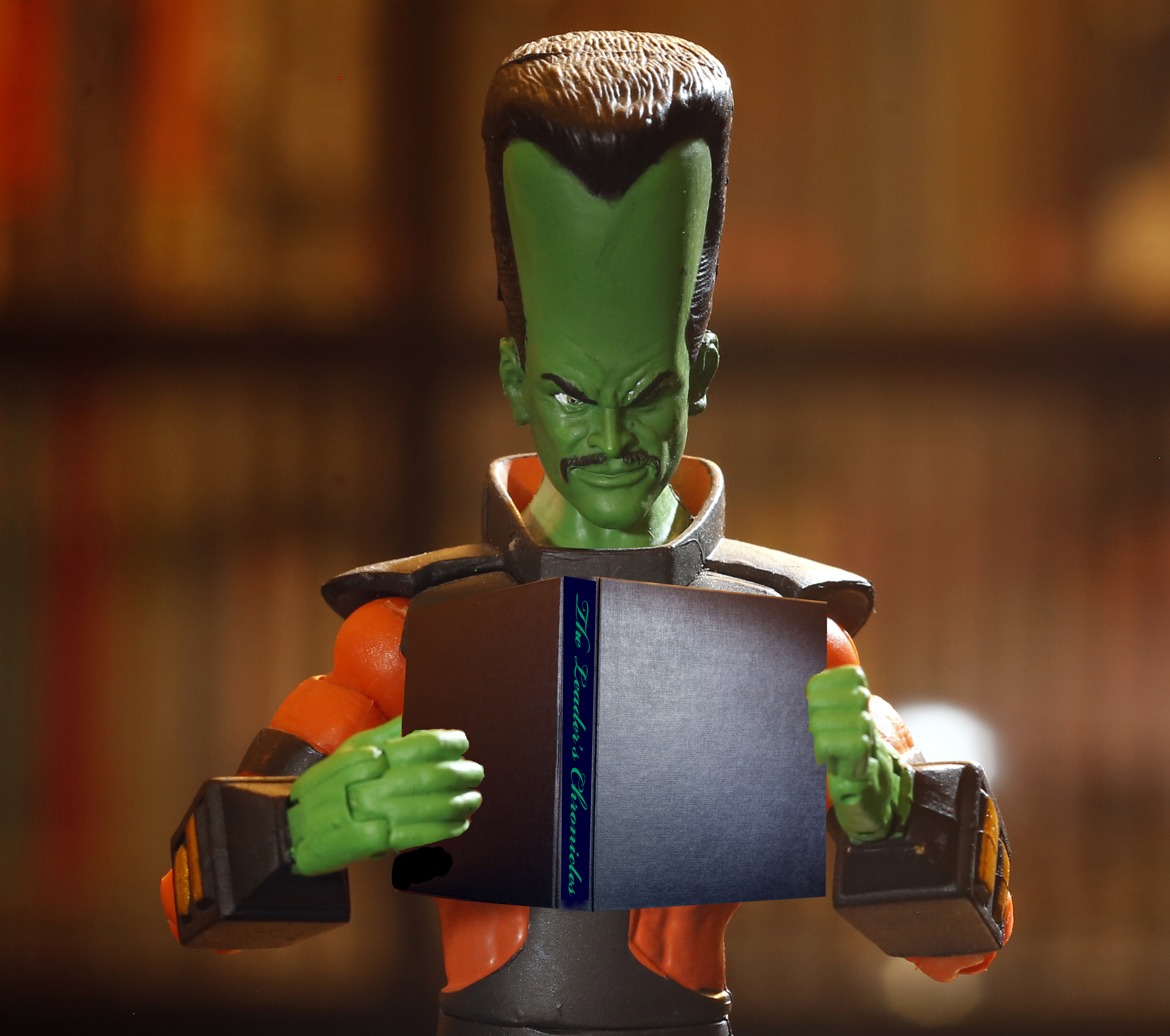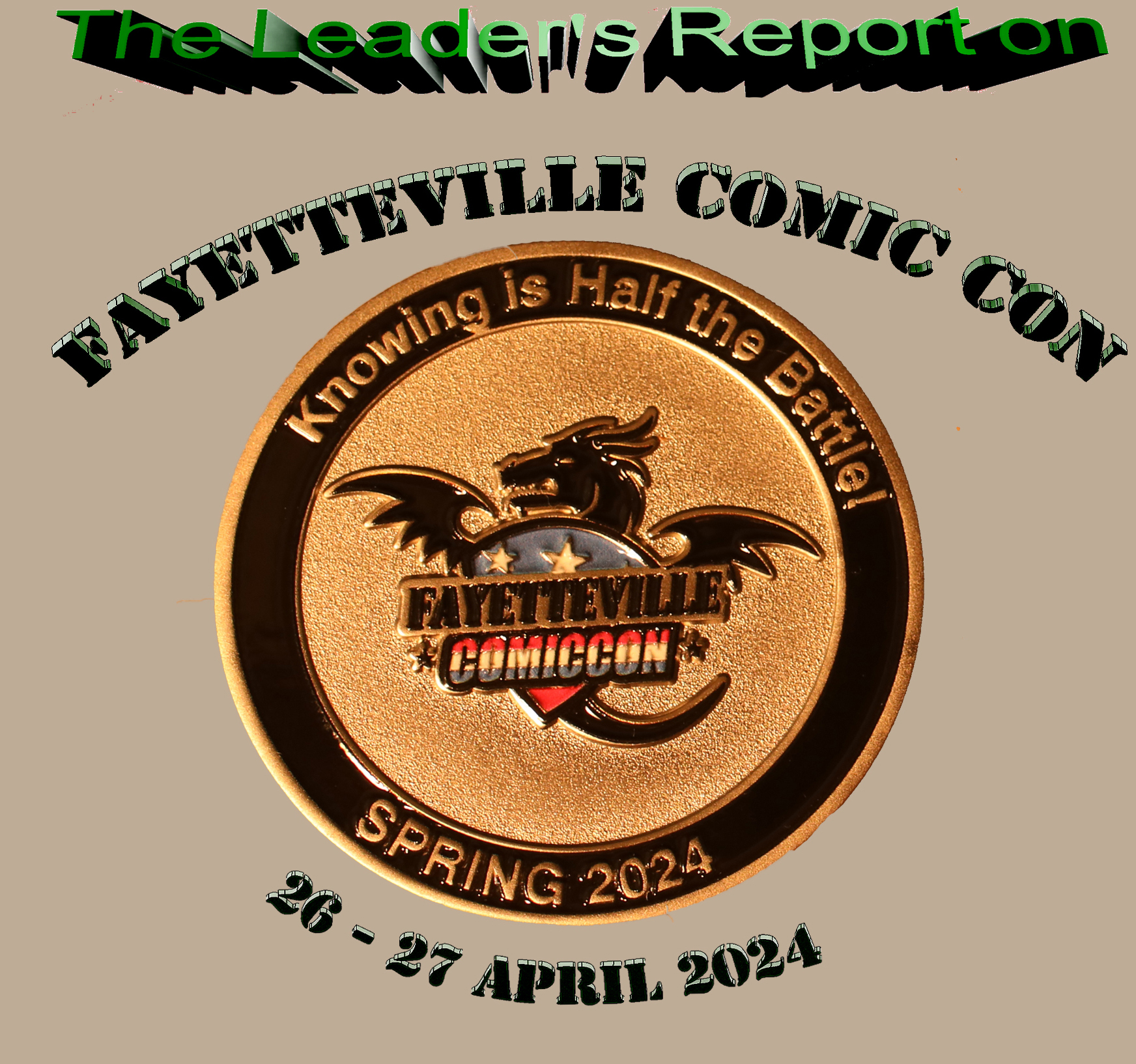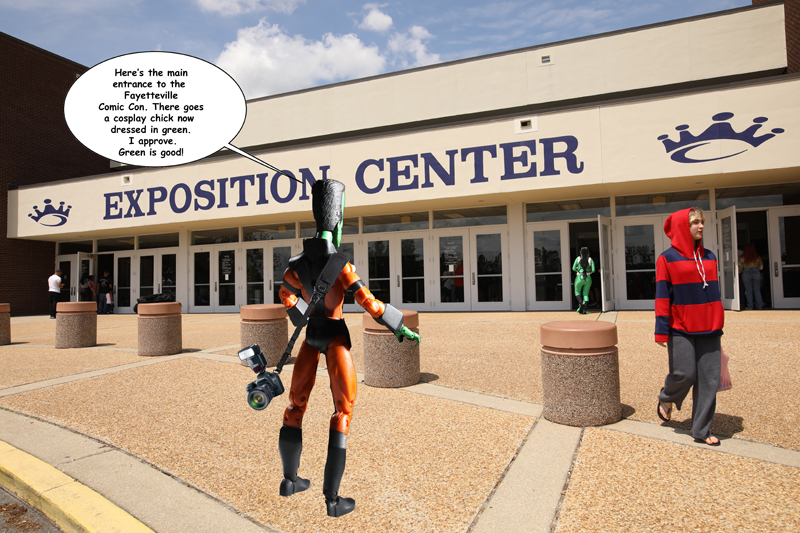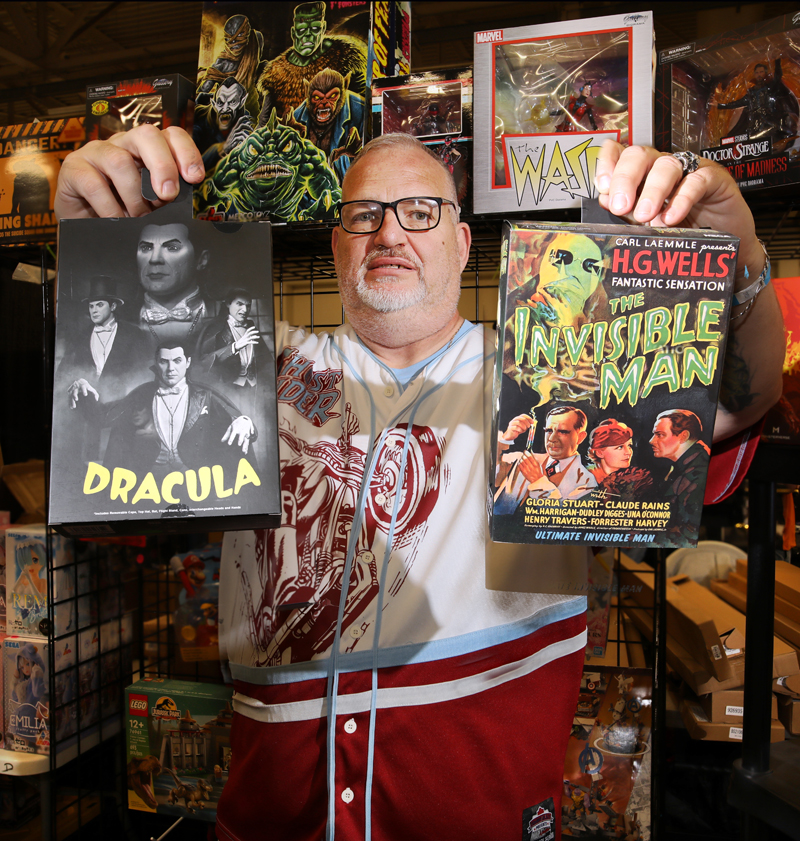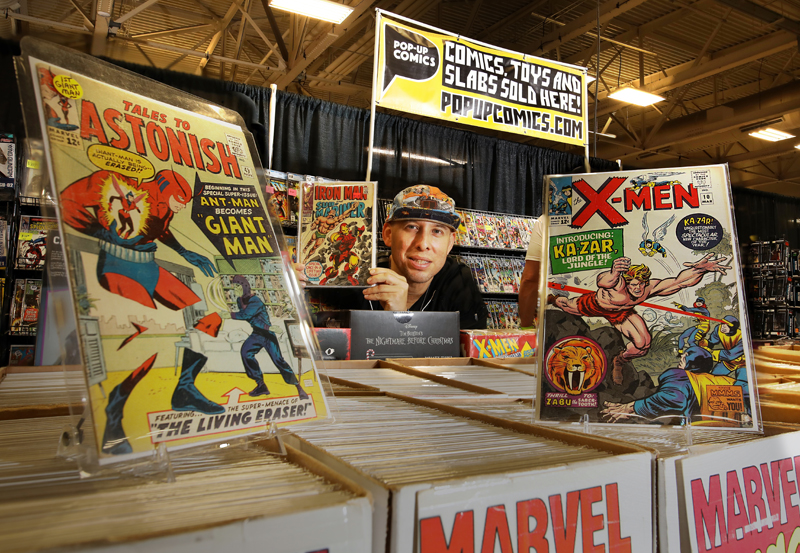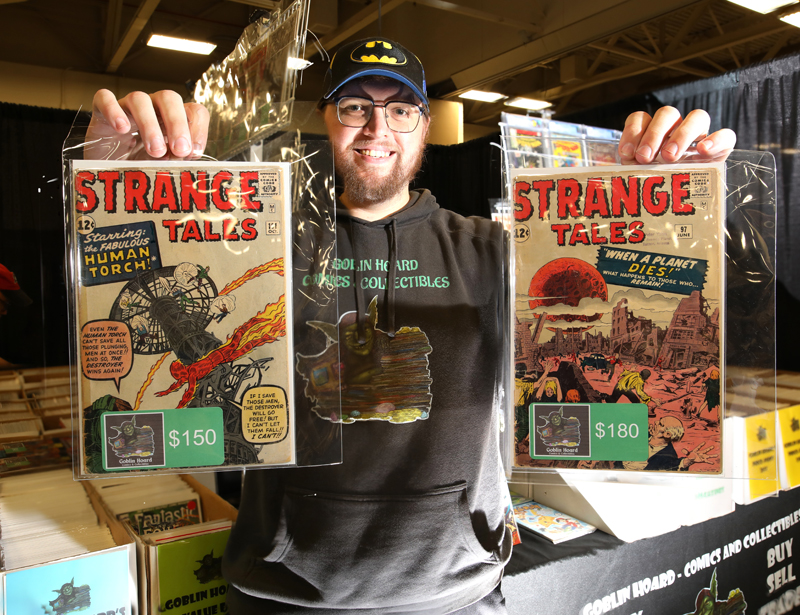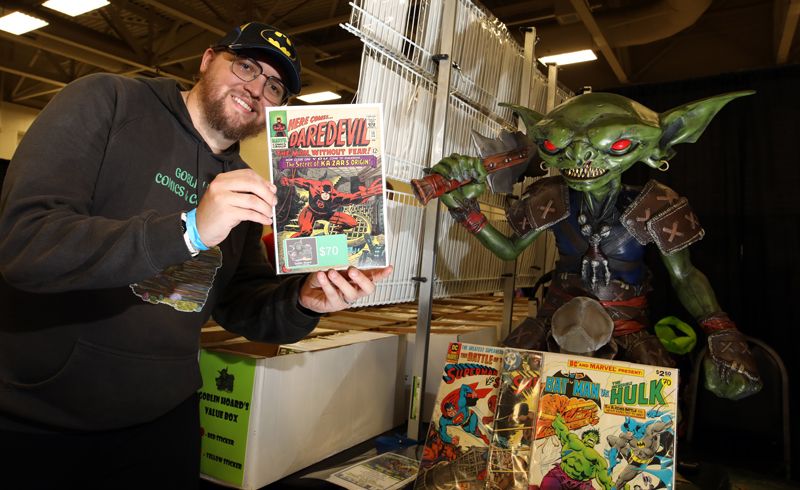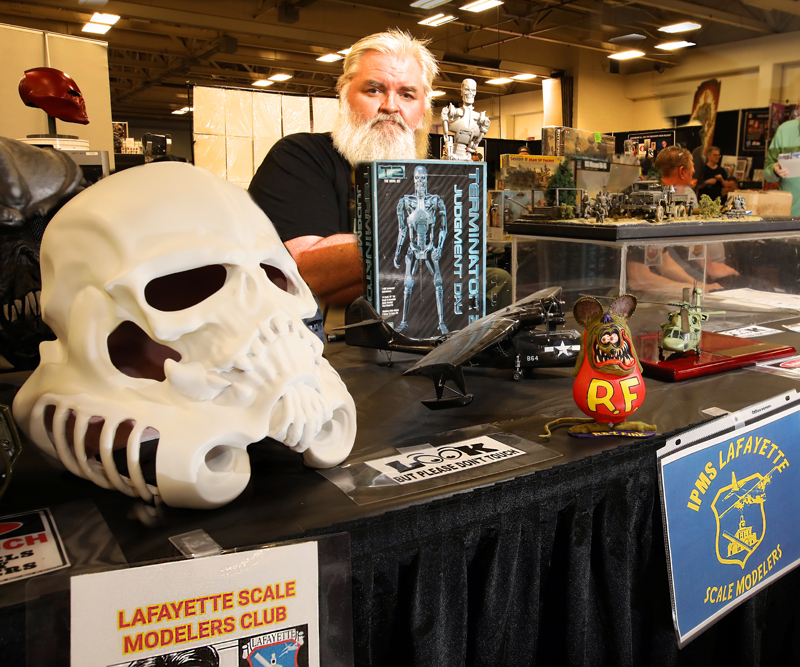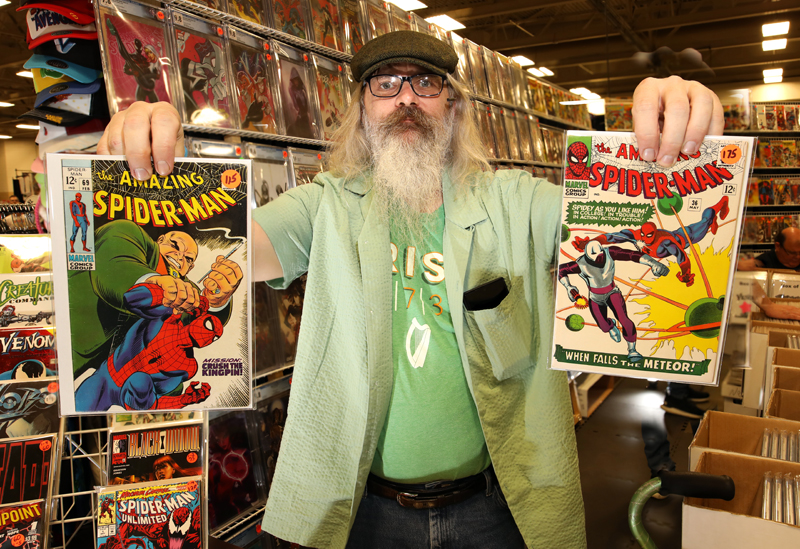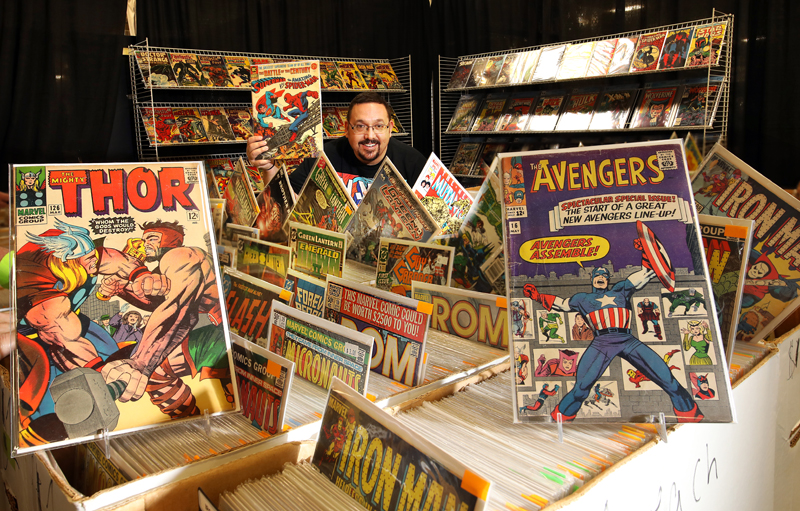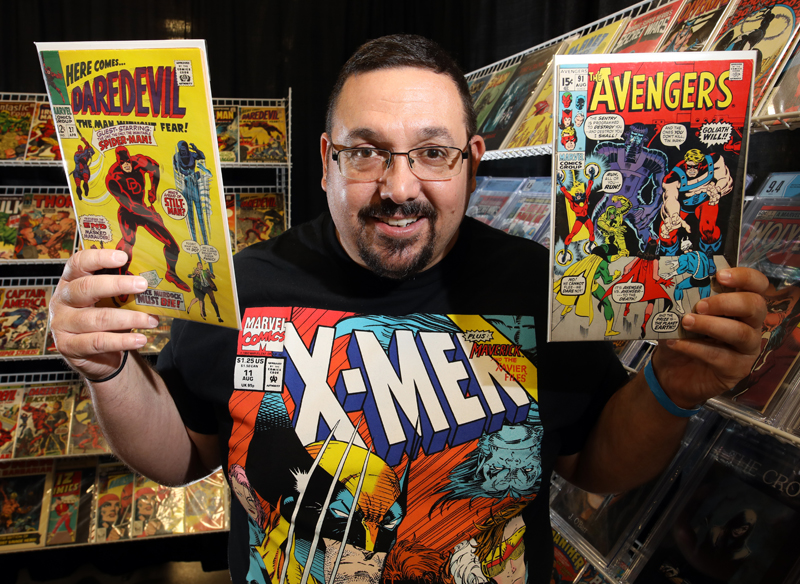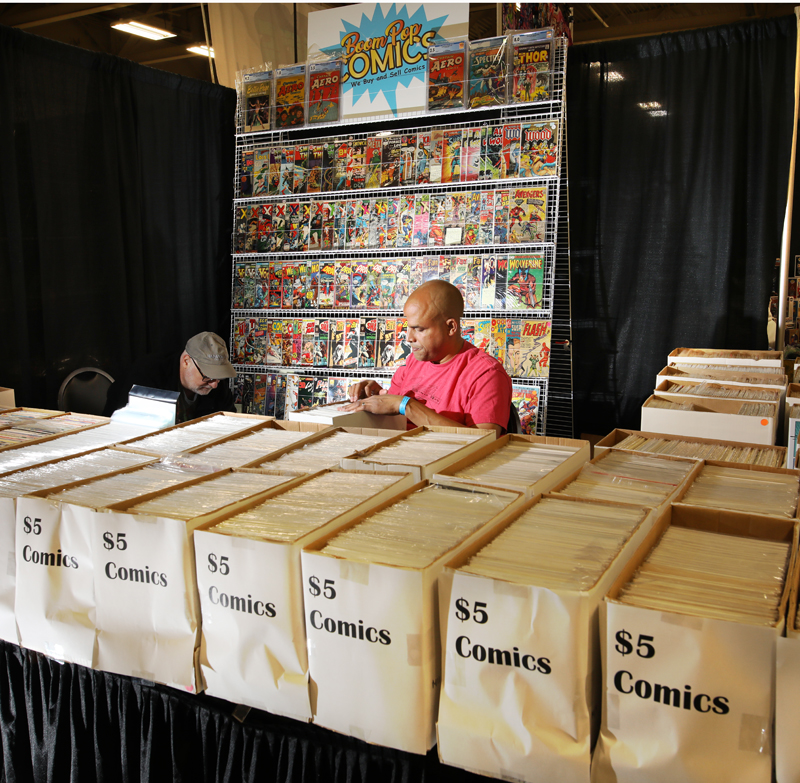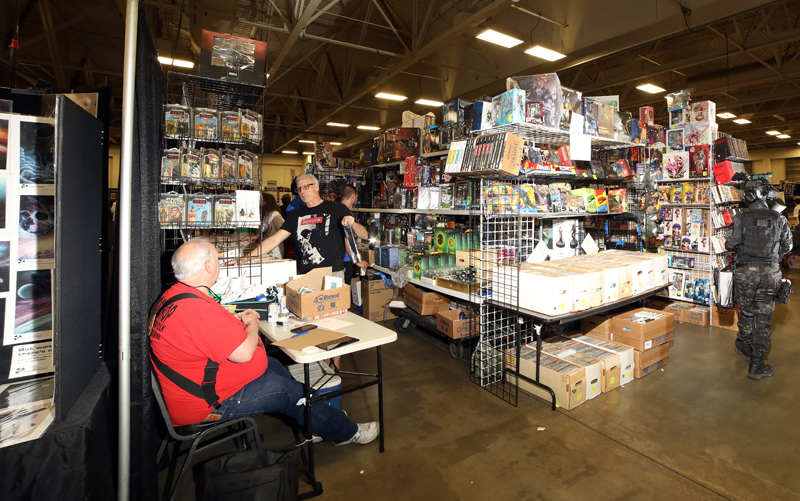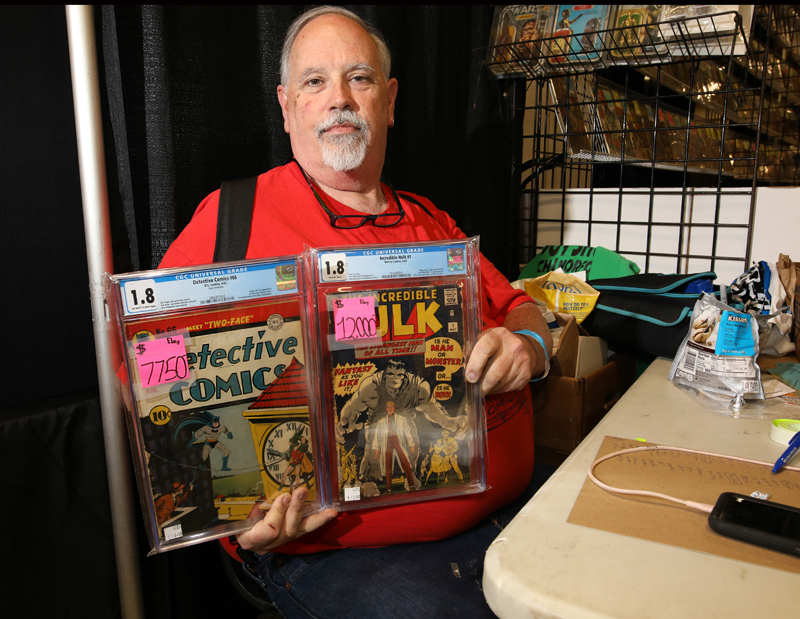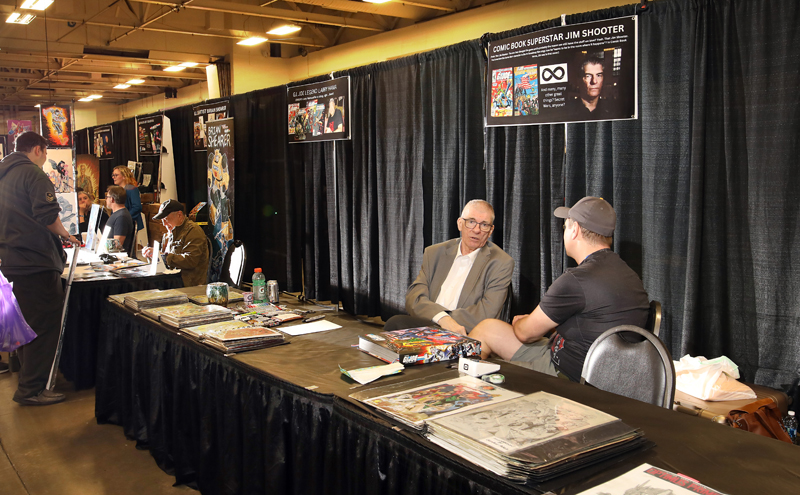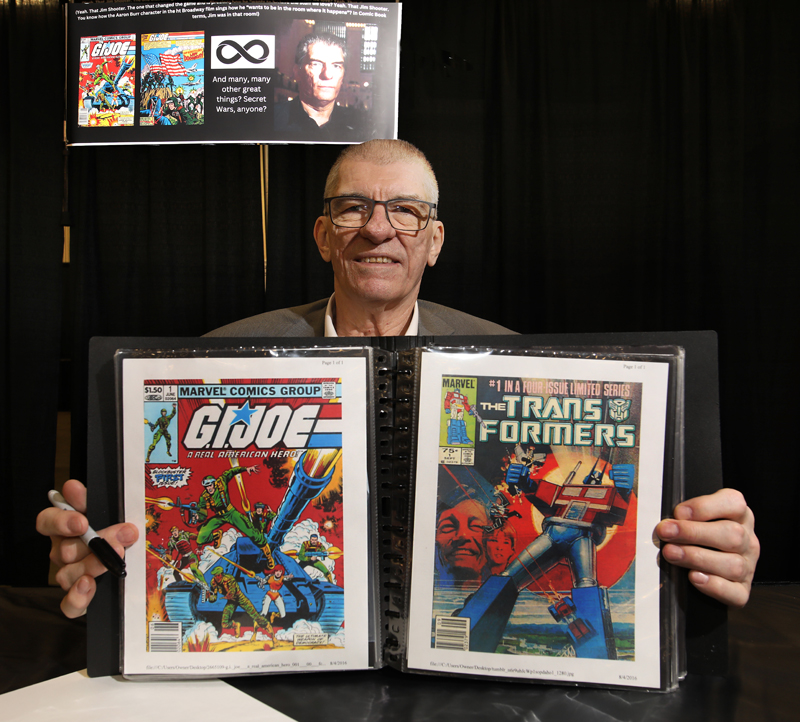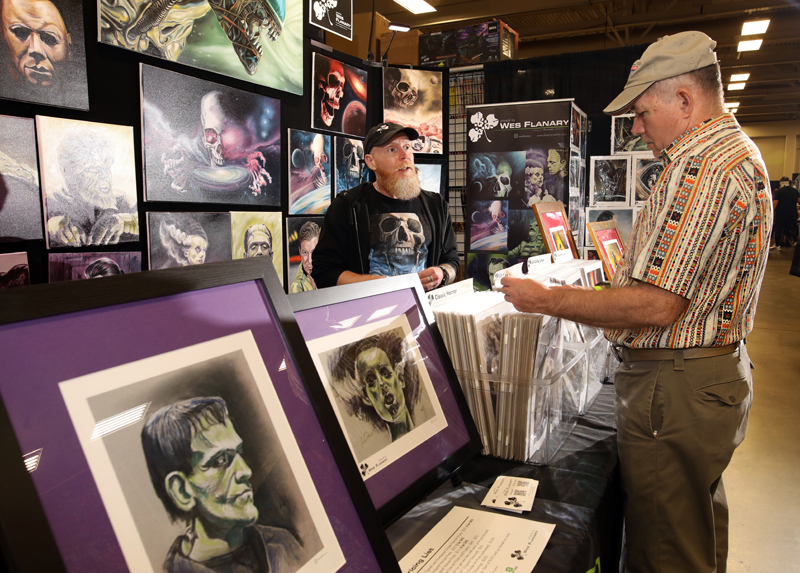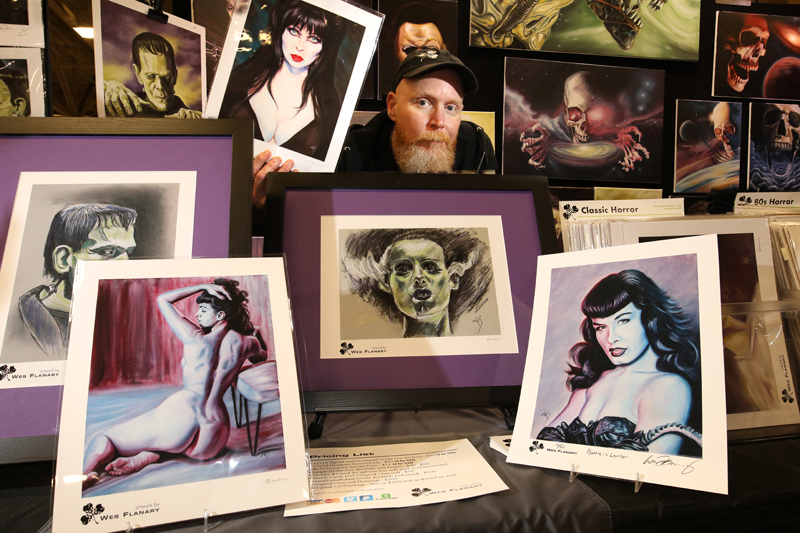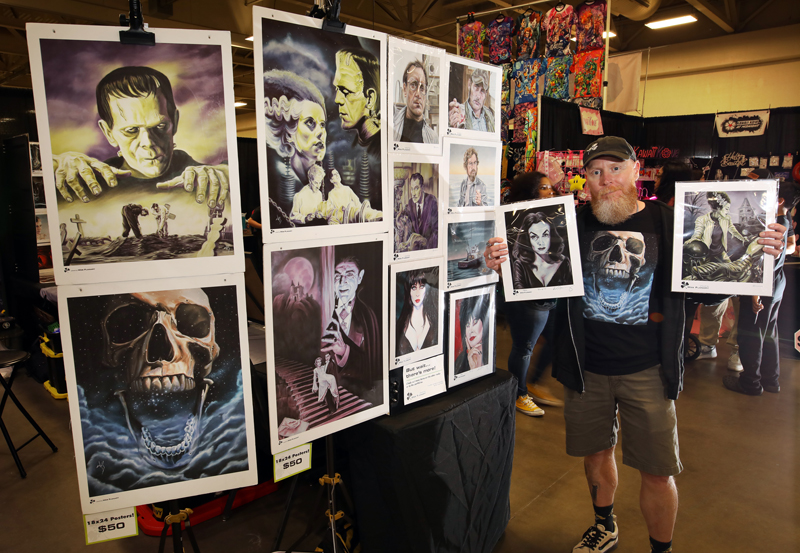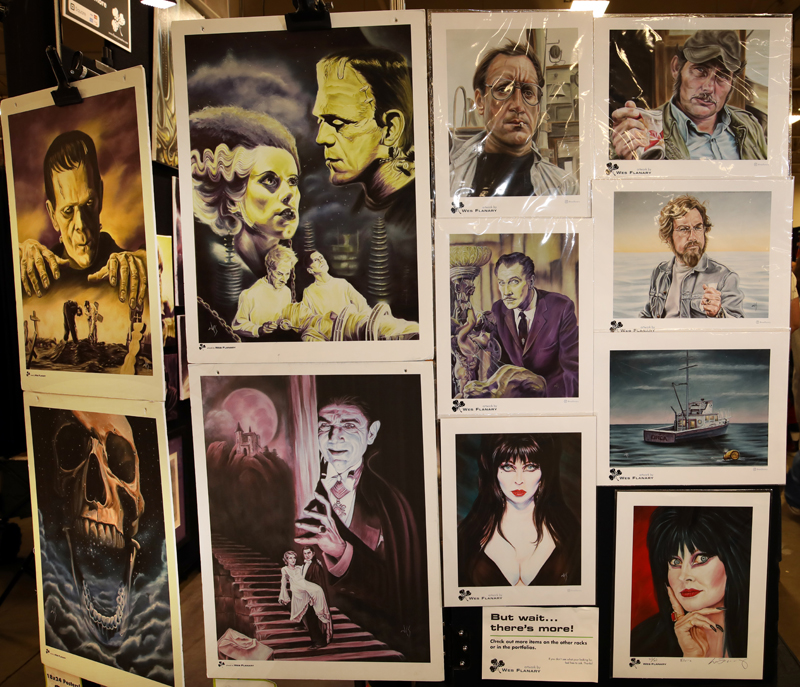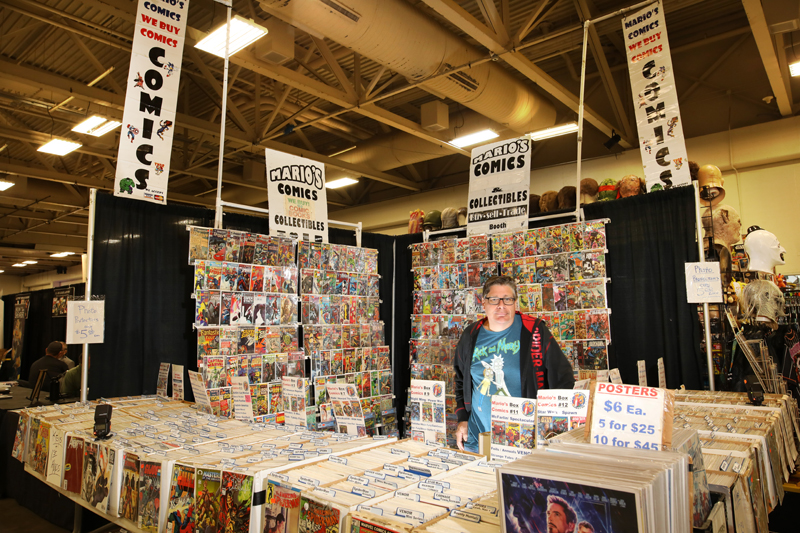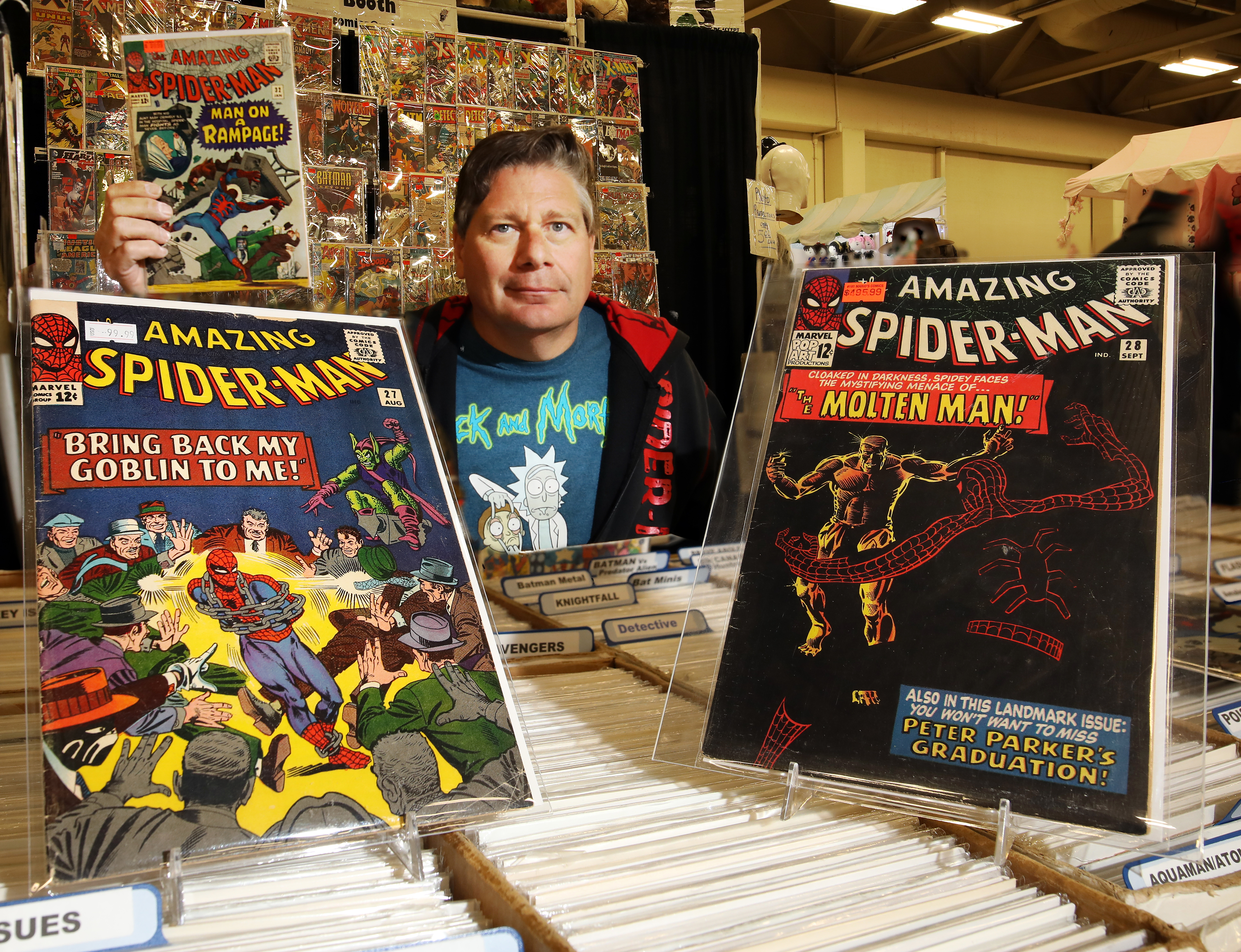|
| |
|
| I first met Pat Burns at the October 2023 Fayetteville Con where he went to dinner at the Mash House with myself, Banks Robinson and other comic book dealer luminaries. Here's Pat with two Silver Age Marvel comics, The Amazing Spider-Man #69, 1968 with cover and story art by John Romita and #36, 1966 with cover and story art by Steve Ditko. |
|
|
|
| |
|
Mike is holding an oversized comic book of some historical importance. This Superman Vs. Spider-Man from 1976 is the first time characters from Marvel and DC "crossed-over" into the same story. The cover art is by Carmine Infantino and Ross Andru with the Superman figure drawn by Neal Adams. Marvel and DC had co-operated on their first joint publication with the oversize comic book MGM's Marvelous Wizard Of Oz in 1975. Superman and Spider-Man didn't meet each other again until Marvel Treasury Edition #28 in 1981.
I didn't usually buy these oversize Treasury Edition style comics since most of them were all reprints and their extra size made them more difficult to store easily; you would have to buy oversize bags and boxes. I did however buy this Superman Vs. Spider-Man. I remember nothing about it today except it had an introduction where Marvel and DC executives Stan Lee and Carmine Infantino made complimentary comments about their companies' respective main characters, Superman and Spider-Man.
In the foreground at left is the first issue of The Mighty Thor. Before this issue #126, 1966 Thor had been appearing in Journey Into Mystery since #83 of that title in 1962. This #126 issue as foreshadowed on the cover features a big battle between Thor of Asgard and Hercules of Mount Olympus. The woman they are fighting over is Thor's girlfriend Jane Foster seen in the background. Thor and Hercules first met and fought briefly in Journey Into Mystery Annual #1, 1965.
The Avengers #16, 1965 with the dynamic Jack Kirby cover marks the first of many times that the Avengers changed their active membership by adding new members and sending some old members on rest leave. |
|
|
|
| |
|
Mike with Daredevil #27, 1967 that features Spider-Man's third cross-over into Daredevil's comic book. The first time Spidey appeared in Daredevil was #16 and #17 of that title.
The Avengers #91, is part of the famous Kree-Skrull War that ran in this title from #89 - #97. The Kree-Skrull War is one of the most spectacular and famous multipart stories in all of Marvel’s history. It’s certainly the most complex and imaginative. It tells the story about a war between the ancient alien races of the Kree and the Skrulls, with the Avengers and other Marvel heroes caught in the middle. It is the showpiece of writer Roy Thomas’s long run on The Avengers and highlights his talent for convoluted but engrossing plots. Many of the issues contain artwork by the legendary Neal Adams which adds considerable luster to the entire saga. The Kree-Skrull War is such a famous part of Marvel history that it was reprinted in two special edition comics in 1983 and again as a deluxe trade paperback in 2000 and in a hardcover edition in 2023. |
|
|
